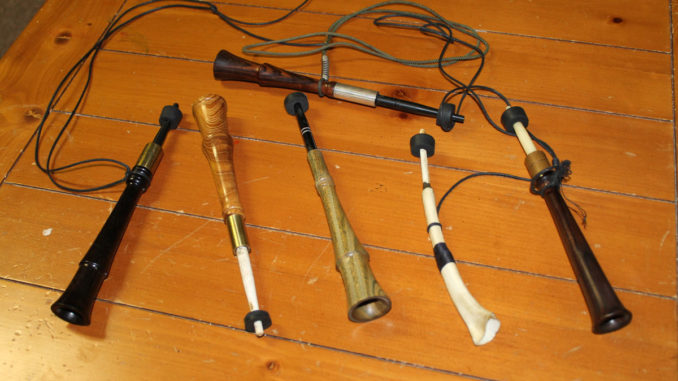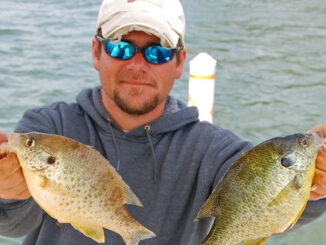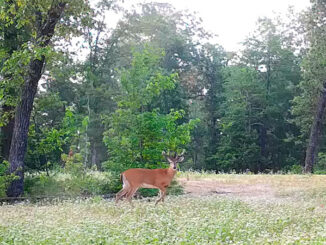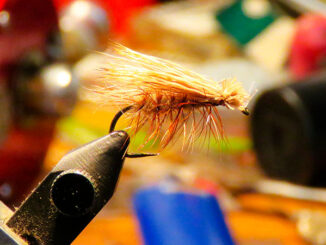
Mention mouth calls to a turkey hunter, and diaphragm calls will come to most minds.
Truth be known, three other kinds of calls are operated by mouth, and a turkey hunter’s arsenal should include all three. Here’s a brief look at each:
• Wingbone. The wingbone call is a mouth call made from, you guessed it, the bones of a turkey’s wing. This tool has fooled turkeys for countless years, bringing them into range of waiting hunters.
Three bones — the humerous, radius and ulna — are cut, hollowed and glued together from biggest to smallest to form a tube. Held in the lips, a “kissing” sound will send a yelp through the tube.
A wingbone takes a lot of practice, but once mastered, few will argue that it makes the most perfect yelps and clucks of all calls.
• Trumpet. The trumpet call is essentially an artificial wingbone, designed to create the same sounds. Due to its modern components, it can be manipulated during construction to fine-tune the sounds you’re trying to make. Trumpets have been made from every exotic wood known, as well as horn, antler, river cane, carbon, carbon fiber, aluminum, and yes, bone.
One advantage trumpet calls have over wingbone calls is the mouthpiece is far more comfortable and customized. As a result, the trumpet is much easier to blow, which maximizes the control you have over the call.
• Tube calls. Tube calls may be the most misunderstood and underutilized in the arsenal. It’s a small, bell-shaped call with a latex or nitrile reed is stretched over the small end. The user places his upper lip across the reed and blows across it.
It is a great locator call; the volume that can be generated with a tube is unmatched. Skilled users can also purr, whine and even cluck on a tube.
All turkey hunters need to own, master and use these calls regularly. If for no other reason, few birds have heard them, and for the call-shy bird, this may be the one sound that can make the difference.





Be the first to comment